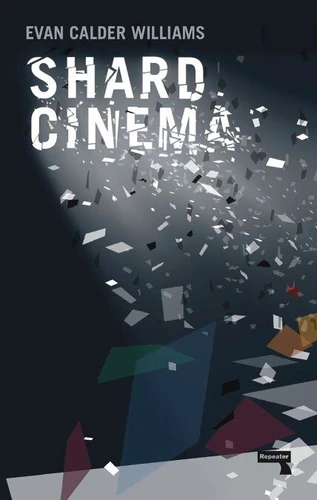Shard Cinema
Par :Formats :
Disponible dans votre compte client Decitre ou Furet du Nord dès validation de votre commande. Le format ePub protégé est :
- Compatible avec une lecture sur My Vivlio (smartphone, tablette, ordinateur)
- Compatible avec une lecture sur liseuses Vivlio
- Pour les liseuses autres que Vivlio, vous devez utiliser le logiciel Adobe Digital Edition. Non compatible avec la lecture sur les liseuses Kindle, Remarkable et Sony
- Non compatible avec un achat hors France métropolitaine
 , qui est-ce ?
, qui est-ce ?Notre partenaire de plateforme de lecture numérique où vous retrouverez l'ensemble de vos ebooks gratuitement
Pour en savoir plus sur nos ebooks, consultez notre aide en ligne ici
- Nombre de pages336
- FormatePub
- ISBN978-1-910924-82-2
- EAN9781910924822
- Date de parution20/06/2017
- Protection num.Adobe DRM
- Taille402 Ko
- Infos supplémentairesepub
- ÉditeurRepeater
Résumé
Shard Cinema tells an expansive story of how moving images have changed in the last three decades and how they changed us along with them, rewiring the ways we watch, fight, and navigate an unsteady world. With a range that spans film, games, software, architecture, and military technologies, the book crosses the twentieth century into our present to confront a new order of seeing and making that took slow shape: the composite image, where no clean distinction can be made between production and post-production, filmed and animated, material and digital.
Giving equal ground to costly blockbusters and shaky riot footage, Williams leads us from computer-generated "shards" of particles and debris to the broken phone screen on which we watch those digital storms, looking for the unexpected histories lived in the interval between.
Giving equal ground to costly blockbusters and shaky riot footage, Williams leads us from computer-generated "shards" of particles and debris to the broken phone screen on which we watch those digital storms, looking for the unexpected histories lived in the interval between.
Shard Cinema tells an expansive story of how moving images have changed in the last three decades and how they changed us along with them, rewiring the ways we watch, fight, and navigate an unsteady world. With a range that spans film, games, software, architecture, and military technologies, the book crosses the twentieth century into our present to confront a new order of seeing and making that took slow shape: the composite image, where no clean distinction can be made between production and post-production, filmed and animated, material and digital.
Giving equal ground to costly blockbusters and shaky riot footage, Williams leads us from computer-generated "shards" of particles and debris to the broken phone screen on which we watch those digital storms, looking for the unexpected histories lived in the interval between.
Giving equal ground to costly blockbusters and shaky riot footage, Williams leads us from computer-generated "shards" of particles and debris to the broken phone screen on which we watch those digital storms, looking for the unexpected histories lived in the interval between.



